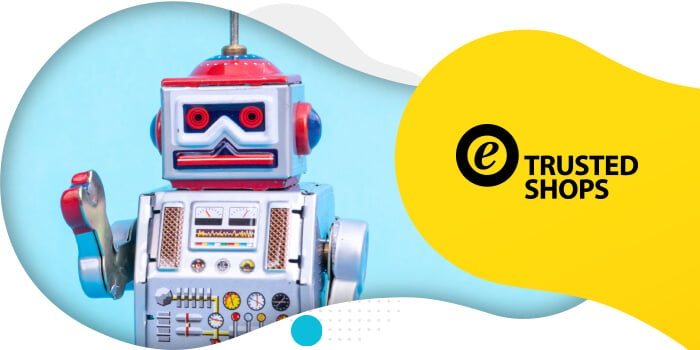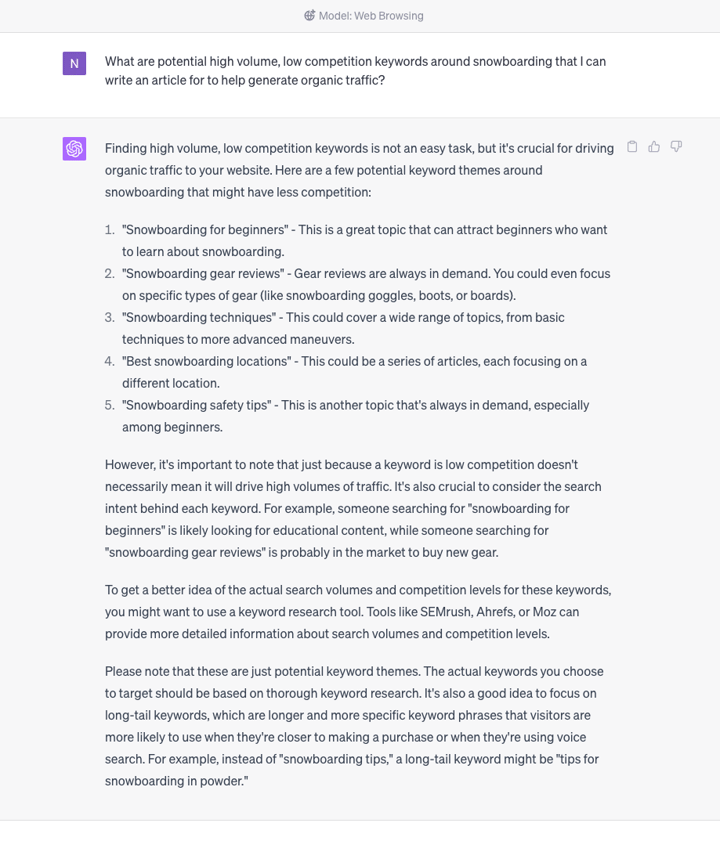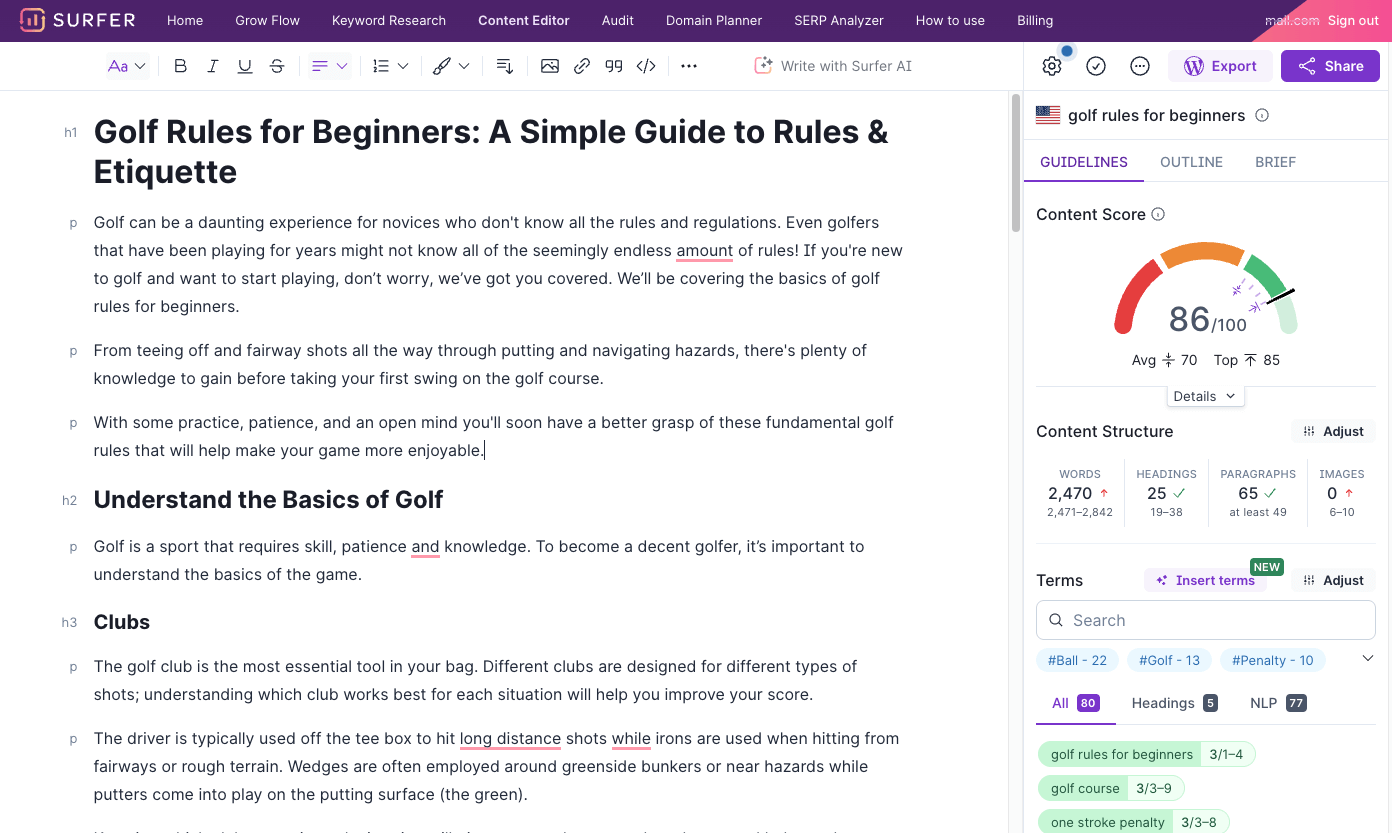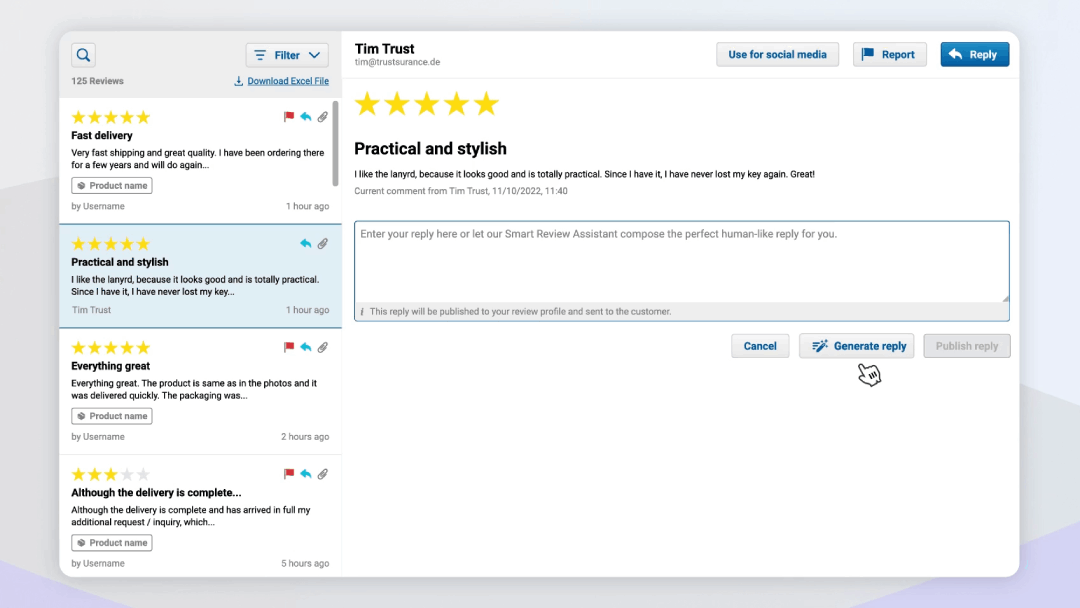Analysing Customer Reviews to Improve Your Business
Learn how to analyse customer reviews effectively to gain valuable insights and improve your business. Discover step-by-step methods and useful tools.

2023 is the year that Artificial Intelligence applications such as ChatGPT and Bing Chat took the world by storm. In the marketing and search engine optimisation (SEO) world, artificial intelligence has the potential to be a game changer. The applications of AI in search engine optimisation are limitless - helping businesses optimise their websites to rank higher in search results and establish a solid online presence.
So, how can you leverage AI for SEO - helping you boost your search engine results?
Keep reading for all the details, from keyword research and content creation to off-page search optimisation.
As the name implies, artificial intelligence (AI) in search engine optimisation (SEO) refers to using AI tools and technologies to enhance various aspects of your SEO, aiming to make your content more attractive to your audience and search engines such as Google.
Previously requiring specialised knowledge from search engine professionals, AI SEO software can help you generate content that search engines love - leading to higher rankings, wider reach, and more organic traffic. The best part of all of this? Search engine optimisation is now as affordable as it has ever been.
You can use Artificial Intelligence for keyword research, data analysis, and content optimisation to improve user experience. AI SEO technologies can also be effective for voice and visual search optimisation.
By integrating the newest SEO techniques available via these AI SEO tools and technologies, you can optimise and improve your search engine results page ranking (hopefully landing on the first page!).
Search engines rely on sophisticated AI and machine learning techniques to crawl and index webpages and rank pages according to relevancy and authority.
Web crawling refers to following a link on the website to a new page. Search engine bots recursively continue this process until they reach a final page without links. In practice, these bots are running 24/7.
Following that step is indexing. Google analyses the text, images, and video files to understand what the website is about. It then stores this information in a large database.
Broadly, the indexing process has two outcomes: either Google determines your page is duplicate or canonical.
As the name implies, a duplicate is when your content is the same as another page. Canonical refers is the one authoritative page out of all the different copies it finds.
Contrary to popular belief, Google doesn't have a duplicate content penalty.
However, republishing the same articles won't help your site rank higher. It can prevent your web pages from being indexed and ranking. In addition, it can reduce your website authority.

Shutterstock/lllonajalll
Here are five ways you can integrate artificial intelligence into your SEO strategy:
Search engines value search intent. They screen content that accurately answers the target keywords people enter into them. To do so, Google categorises the former into four groups. These four groups are informational, commercial, transactional, and navigational intents.
Users can search for similar keywords with very different search intent.
As a ski shop business owner - your customers will include beginners first learning how to snowboard. These beginners may search for "snowboarding turns for beginners." You can match their intent - and the intent search engines are looking to provide - with informational articles outlining the step-by-step process of turning on a snowboard.
Commercial intent is represented when searchers want to explore their options before purchasing. Commercial intent is further down in the sales funnel. An example of a search with commercial intent would be "best beginner snowboards." In this case, your customer is signaling their desire to research before purchasing.
Transactional, while similar - is even closer to the purchase. "Buy Burton snowboard" would be a great example of a search with transactional intent. The customer is signaling they will buy the product.
As for navigational searches, this is when the customer wants to find a product, service, or facility - but doesn't know the website's name or URL. Understanding intent helps you develop SEO strategies to drive traffic and generate leads.
Keyword research helps you achieve just that. The process involves finding and analysing terms people use in search queries and their intent. Over the next few years, the amount data on the internet is projected to grow to more than 180 zettabytes. Doing manual keyword research is quickly becoming more complex.

While there are dedicated keyword research AI-based SEO tools - a well-placed ChatGPT prompt, paired with a traditional keyword research tool can do the trick. We even received a friendly reminder to consider search intent!
AI can be used to create content. Using natural language processing, AI writing tools can help you automate this process. They can generate human-like text, assisting you in creating blog posts, product descriptions, or other web content.
Of course, large language models such as ChatGPT can be prone to a phenomenon known as AI hallucination, be sure to fact-check the information and revise it for improved readability.

Several AI marketing tools, such as SurferSEO, can help you with this task. Whether you've written the article front-to-back yourself or used an AI SEO tool to assist with the writing, you still need to do content optimisation.
Such SEO editors provide real-time feedback about your content score, suggesting relevant keywords and phrases.
You can use AI for on-page SEO, optimising meta descriptions, title tags, headers, and internal linking—all of which help your website rank higher.
Customer reviews can improve on-page SEO in a few ways.
The most obvious way is by including relevant keywords on the page and the number of reviews indicating EEAT, or Expertise, Experience, Authoritativeness and Trust.
While bounce rate is not a direct ranking factor for Google, customer reviews generally improve customer experience, leading to more time on page - indirectly indicating to Google that your website is engaging and trustworthy.
In addition, according to Google's Rater Guidelines, it "consider[s] a large number of positive user reviews as evidence of positive reputation."

Trusted Shops, a Google-certified reviews provider, has created a new tool that utilises artificial intelligence to streamline review responses. Trusted Shops’ Smart Review Assistant automatically creates unique and relevant review responses when a customer reviews a product or service.
For longer customer reviews - the tool can also summarise the review into a few bullet points - giving the shop owner a concise overview of the most important feedback.
All auto-generated replies can and should be checked manually, and the tool allows users to edit them before publication.
By boosting engagement with your existing customers, your future customers will be more likely to buy - leading to increased conversions, the end of a search, and higher search engine rankings.
Competitor and backlinking analysis are some of the most essential practices to inform you about the progress of your search engine optimisation efforts compared to your competitors. It's the process of auditing your website to collect valuable data, including:
Such information is essential to help you identify areas of improvement. Analysing and processing your competitors' backlinks and why they are ranking is becoming increasingly difficult in recent years. SEO backlinking and outreach tools can help you with this process.
Such programs provide detailed evaluations of competitors' rankings and backlinks alongside link juice. They also highlight technical SEO issues, such as broken links, redirect chains and duplicates.
By grasping these valuable insights, you can make data-driven decisions to refine your SEO strategies, eventually improving your website's visibility and performance. The market for AI tools in backlinking is constantly growing - so be on the lookout here for new tools that can help with competitor analysis and backlinking.
User experience and core web vitals are critical to ranking well on Google.
Core web vitals consist of several different factors. These elements include:
After establishing a baseline for user experience through measurement and optimisation of your core web vitals, website personalisation can help boost your SERP ranking. By providing relevant content, you can reduce your bounce rate.
By leveraging generative AI, you can provide personalised content in several ways.
With the creation of new generative AI models and SEO tools, artificial intelligence's use in SEO is quickly becoming indispensable. It has revolutionised and will continue to revolutionise how businesses improve online visibility.
AI technologies can help you with keyword research, content creation, and optimisation to cater to text, visual searches, or even voice search.
Of course, it's important to remember that artificial intelligence and the usage of AI-powered tools are simply a means to an end - at the end of the day, people want personalised, human interactions. Consider augmenting your website with something like Trusted Shops' Smart Review Assistant to keep the personal touch.
05/07/23Learn how to analyse customer reviews effectively to gain valuable insights and improve your business. Discover step-by-step methods and useful tools.
Sales holidays are important for many online shops. These special holidays can vary across the different European markets!